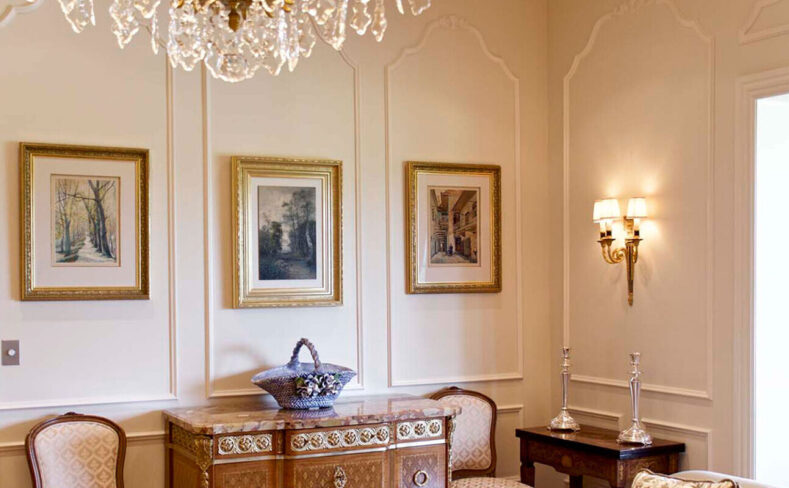
History and Design of Decorative Wall Panels
I. What is a decorative wall panel?
Create a magnificent Hamptons-style home by enhancing any space, or give a modern or more conventional Edwardian, Georgian, or French-style house substance.
Wainscoting panels, a stunning type of artistic wall paneling that gained popularity as early as the 16th century, are boards or panels that span all the way up or partially across a wall’s surface. Originally, wainscoting panels were used to cover rising dampness caused by moisture in the floor, act as insulation, and shield walls from harm. Wainscoting panels are primarily an aesthetic wall feature in modern interior design, adding a remarkable amount of flair, character, and value.
Contemporary has a wide range of uses, materials, and designs. George Panel can offer you a variety of and materials that are both a practical and elegant way to add charm and interest, whether you’re looking for the ideal feature for a Hamptons-style home, office feature wall, or you’d like to add an elegant interior statement that enhances the character and value of your interiors.
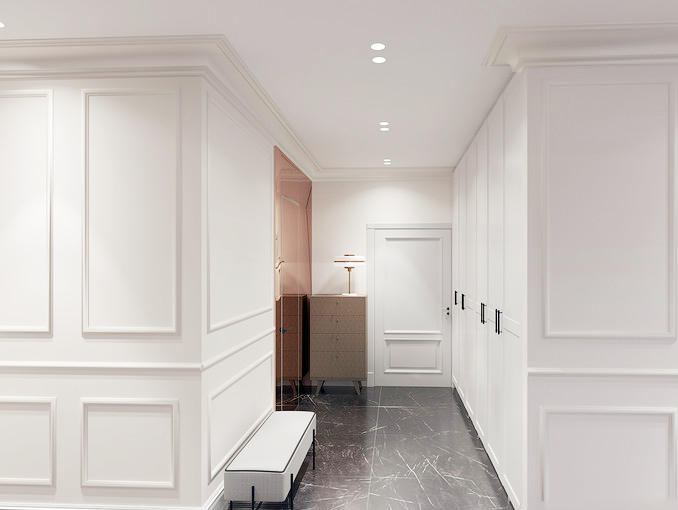
II. History of decorative wall panel design
Decorative wall panel, also known as wainscoting, has been around for a while. Even in ancient Roman frescoes, wall designs were framed with painted borders that defined each section and allowed the viewer to focus on specific design features. All classic mansions since then have used moldings and painted frames to create features that both contain decorative wall elements and create a sense of structure that balances large surfaces.
In the home we seek order and harmony, and the proportions of areas defined by lines, such as those made of decorative interior moldings, can provide this harmony.
III. What are the designs of decorative wall panels?
1. Low panels
Low panels at waist height with only skirts or chair arms create a structured elegance. Leaving the top free is perfect where the ceiling is low, as the proportions can help give the impression of a taller space. The system is especially suitable for stairs.
2. Full panelling
Full paneling, which comes in panels up to waist height and higher, is perfect for giving a room a classic and more formal feel. The way the panels are proportioned can also help draw attention to artwork and mirrors, or accentuate the proportions of furniture in the room, such as a bed or sofa.
3. Shaped or Louis wall panelling
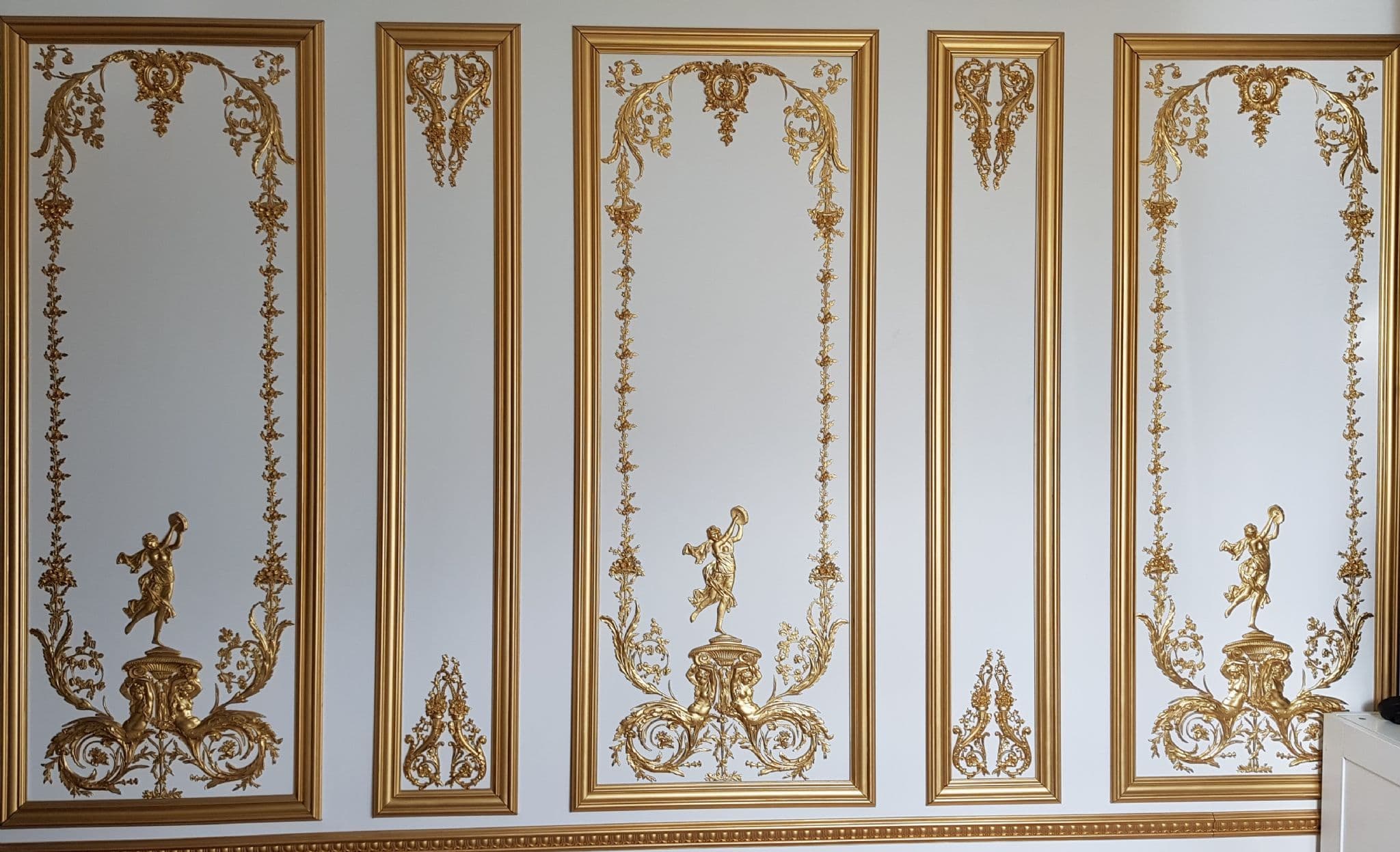
Profiled or Louis siding is a classic French style in which the top of the siding is profiled, usually with carved decoration on top and sometimes in the corners. This really adds to the classic French feel of the room.
4. Wall panels with wall paper
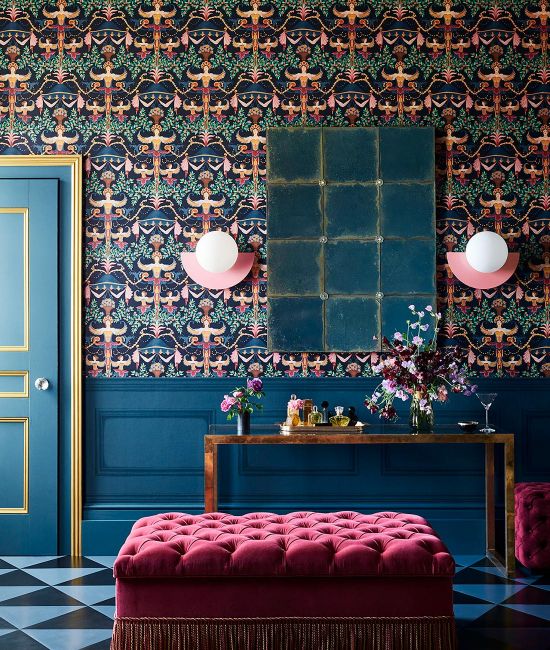
Source: https://www.countryliving.com/homes-interiors-wallpaper-ideas
Wall panels with wallpaper, especially hand-painted chinoiserie wallpapers such as De Gourney, with delicate branches, leaves and birds, are perfect for framing and create a great decorative effect. Even simple wallpaper that looks more restrained can be framed to great effect.
5. Wall panelling in contrasting colours
Contrasting color wall panels. Even without wallpaper, wall panel designs and moldings can be used to create a bold and stylish effect with contrasting paint colors. It can be as simple as painting the moldings a slightly darker or lighter tone than the walls, or for a more dramatic effect by painting the interior a different color than the rest. Paneling can be of any colour, shade or gilding. Also available in Scrub, Bronze and Antique washes.
6. Gilded wall panelling
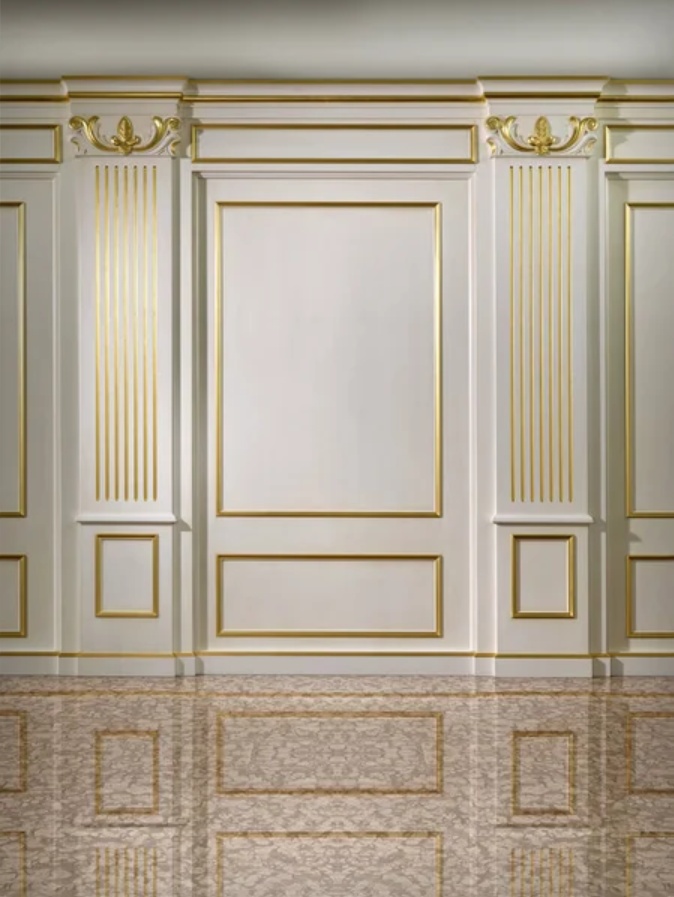
Source: https://www.google.comwall-paneling
Gilded wall panels instantly transform the interior room with the magic added by gold trim. This can be done very subtly with a fine gold thread or lots of gilded elements and carvings, depending on whether one wants the look of a Parisian apartment or Versailles in the bedroom…
7. Wall panelling with painted decorations
Wall panels with painted decoration. In classic mansion interiors in France and much of Europe, wall panels are often decorated with elaborate hand-painted finishes, trompe l’oeil designs or painted motifs. They are a very prominent feature that sets the style and decor of every room. While not many people today want to recreate the full grandeur of those paneled rooms, we can still incorporate some of the classic sophistication that a paneled wall brings to a room.
8. Frame & Panel
Frame and panel siding—the traditional wainscoting style—first became popular as a method of insulation. While originally best suited to the dining rooms and living rooms of Colonial-style homes, installing frame and panel wainscoting adds elegance and appeal to any room or home. This wainscoting method has become popular in traditional Hamptons and Cape Cod American homes.
This style of wainscoting is easily distinguished from the others; MDF or plywood is placed over the entire wall where the wainscoting appears (usually only to the height of the chair rail), and square battens are used to create a Shaker-style for the exterior, then a decorative inlay mold is placed into the interior groove to form the center of each panel.
9. Flat panel
Flat panel wainscoting is used to achieve a rocker look, which is more casual and modern than traditional raised panel wainscoting. This style uses flat DAR panels (no beveled edges or molding), so it is often preferred when siding that is economical and quick to install is desired.
10. Beadboard
Beadboard siding first appeared in traditional Victorian and cottage homes. Wainscoting in this style consists of ornate, subtle vertical grooves (or “beads”) milled into the wood. Beadboards come in a variety of styles and widths, but usually consist of thinner, individual backing boards placed side by side.
More recently, shiplap style planks have been used to create a cleaner, more modern look, along with the use of VJ boards, saving installation time and achieving the same look.
11. Raised panel
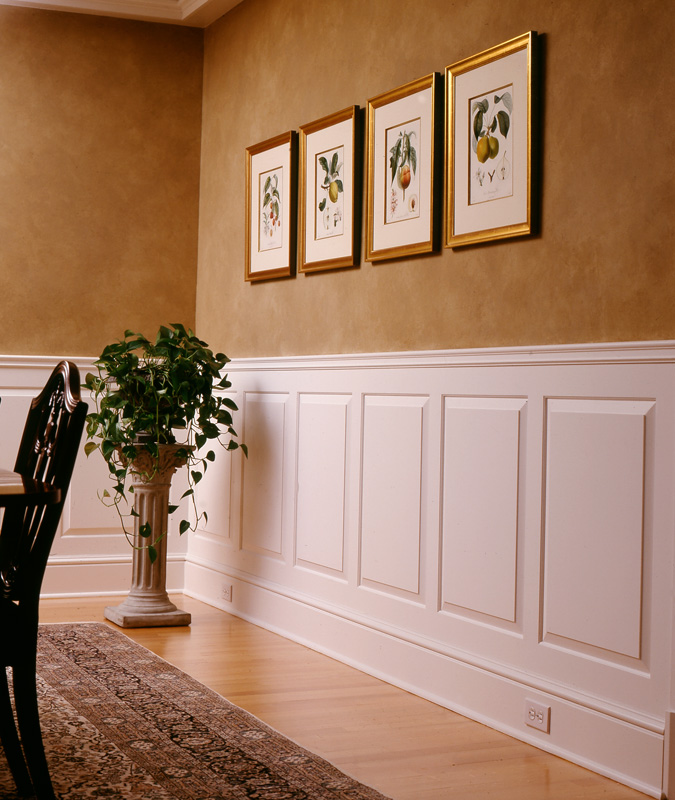
Source: https://www.google.com/Fraised-panel-wainscoting
Raised panel wainscoting is where inlay molding is fastened directly to the wall to create a multi-“picture frame” look on the wall. It’s a relatively simple, cost-effective approach that’s perfect for interiors that require fine detail without being influenced by traditional Hamptons or American styles.
Inlay moldings can be used with or without chair arms, and different sized “frames” can be applied to an entire wall, offering flexibility in your interior design.
Quick Quotation



